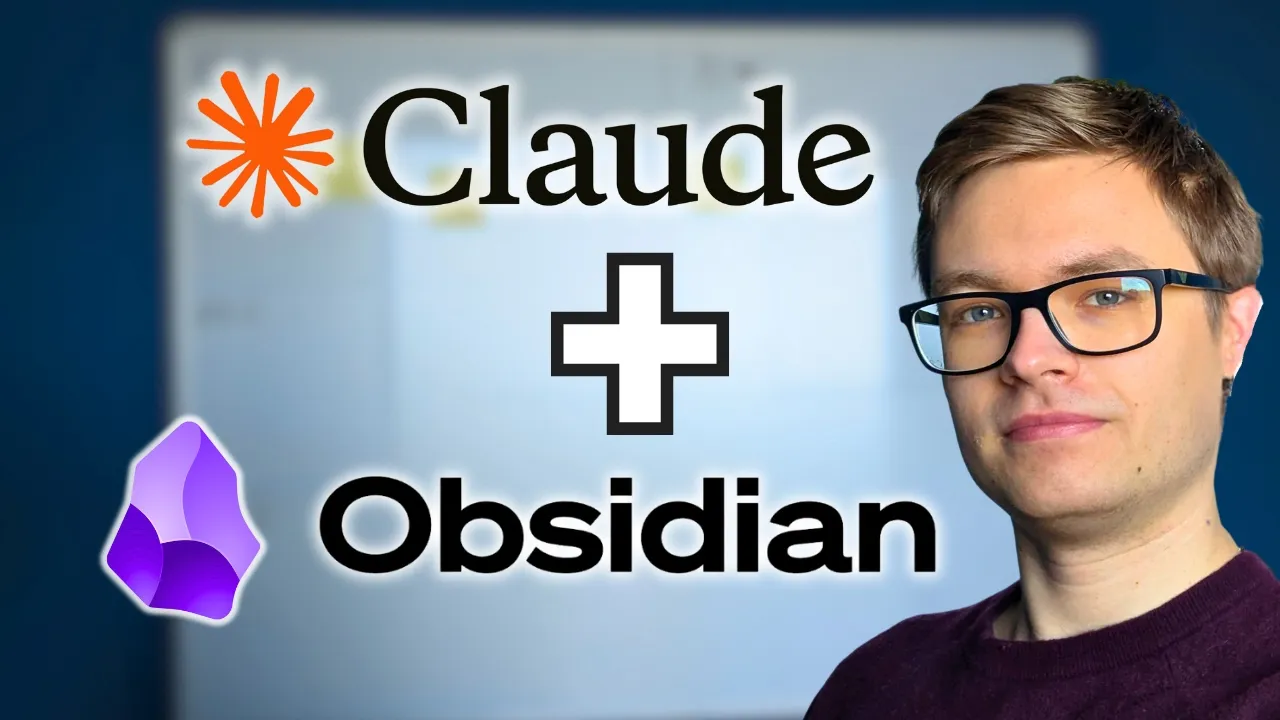Enhancing Your Obsidian With AI
Imagine your digital notes actively forming connections while you sleep, revealing patterns and relationships you never consciously recognized. This isn’t science fiction—it’s the reality of combining AI systems like Claude with knowledge management tools like Obsidian.
The Power of Connected Thinking
Knowledge doesn’t exist in isolation. The most profound insights often emerge from unexpected connections between seemingly unrelated ideas. Traditional note-taking treats information as isolated fragments, but our brains don’t work that way—we think in networks, associations, and relationships.
Knowledge graphs visualize these connections, creating a map of your thinking that reveals hidden patterns. When you can see how ideas relate to each other, you gain a meta-perspective that’s impossible with linear notes.
What makes AI integration transformative is that it doesn’t just passively record these connections—it actively discovers them. As demonstrated in the video, Claude can analyze content across your entire knowledge base, identifying conceptual links that might take years for you to discover manually.
AI-Driven Connection Discovery
The human brain excels at deep focus but struggles with comprehensive analysis across thousands of notes. AI complements this perfectly by excelling precisely where we’re limited.
When integrated with a knowledge management system, AI can:
- Identify thematic patterns across your entire knowledge base
- Connect related concepts that exist in different contexts
- Surface contradictions or complementary ideas
- Create linkages based on semantic meaning rather than just keywords
- Continuously update connections as your knowledge base grows
This partnership creates a system greater than the sum of its parts. You focus on creative thinking and deep work, while the AI handles the cognitive overhead of maintaining connections. This approach represents a practical application of AI agent development principles, where specialized AI tools work alongside human intelligence to accomplish complex tasks.
Creating Emergent Insights
The most valuable aspect of this integration isn’t just organization—it’s the emergence of insights that neither you nor the AI would generate independently.
When you open your knowledge graph and see that your notes on medieval history are conceptually linked to your thoughts on modern social media, or that your project planning approach parallels patterns in nature you documented months ago, you experience perspective shifts that lead to genuine breakthroughs.
These “aha moments” are the difference between a static collection of notes and a dynamic thinking environment that actively contributes to your intellectual development.
Building an Augmented Intelligence System
This integration represents a shift from artificial intelligence to augmented intelligence. Rather than replacing your thinking, the AI extends and enhances it, handling the maintenance tasks that often prevent us from fully utilizing our knowledge bases. For organizations looking to implement similar AI-enhanced workflows, understanding building AI applications with production-ready architecture becomes essential for scaling these capabilities.
The knowledge graph becomes a true extension of your thinking—a digital mind that works alongside your biological one, each contributing unique strengths to create something neither could achieve alone.
This cooperative approach means your ideas and research work for you without additional effort. The system becomes increasingly valuable over time as connections multiply and strengthen, creating a snowball effect of insight generation.
From Theory to Practice
While the technical implementation requires some setup, the conceptual shift is more important than the specific tools. Your knowledge management system should be working for you, not the other way around. If you’re interested in exploring different AI coding tools and their capabilities, understanding how they integrate with existing workflows becomes crucial for maximizing productivity.
By embracing AI-enhanced connected thinking, you transform from a mere collector of information to a curator of insights. Your digital notes become a living, evolving system that actively contributes to your intellectual journey.
The knowledge graph ceases to be just a visualization and becomes a thinking partner, highlighting connections you missed and suggesting new directions for exploration.
To see exactly how to implement these concepts in practice, watch the full video tutorial on YouTube. I walk through each step in detail and show you the technical aspects not covered in this post. If you’re interested in learning more about AI engineering, join the AI Engineering community where we share insights, resources, and support for your journey. Turn AI from a threat into your biggest career advantage!

